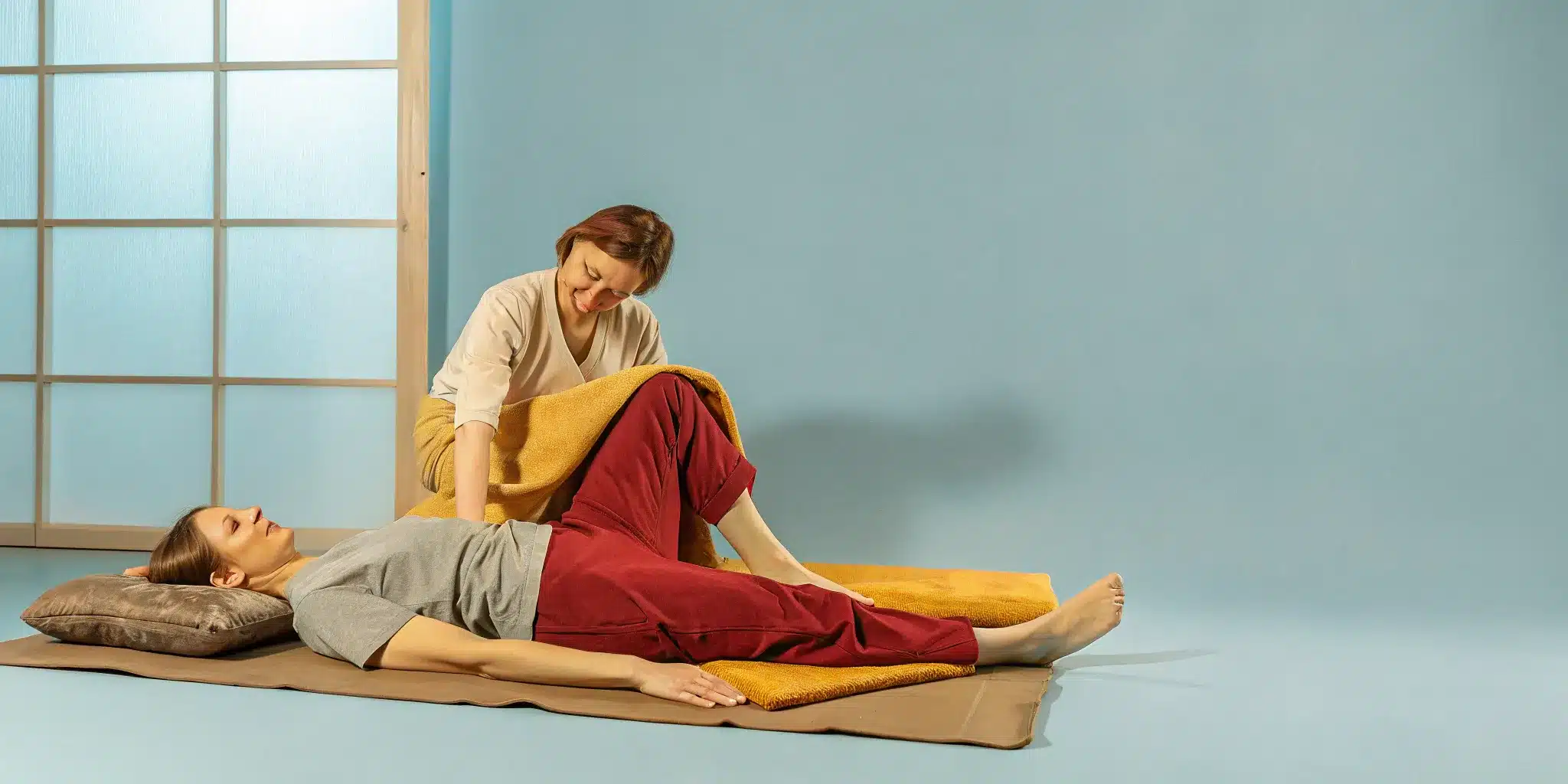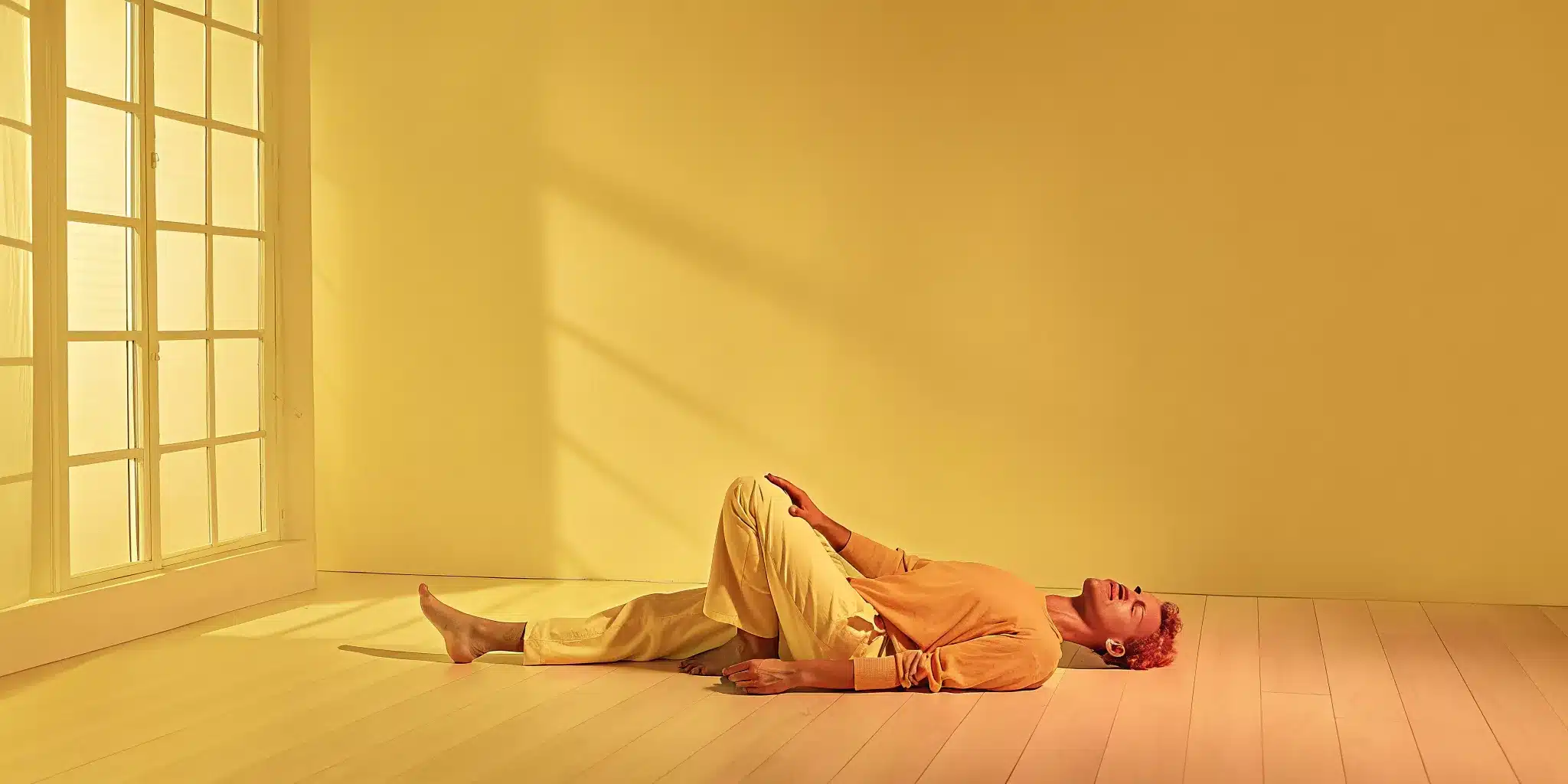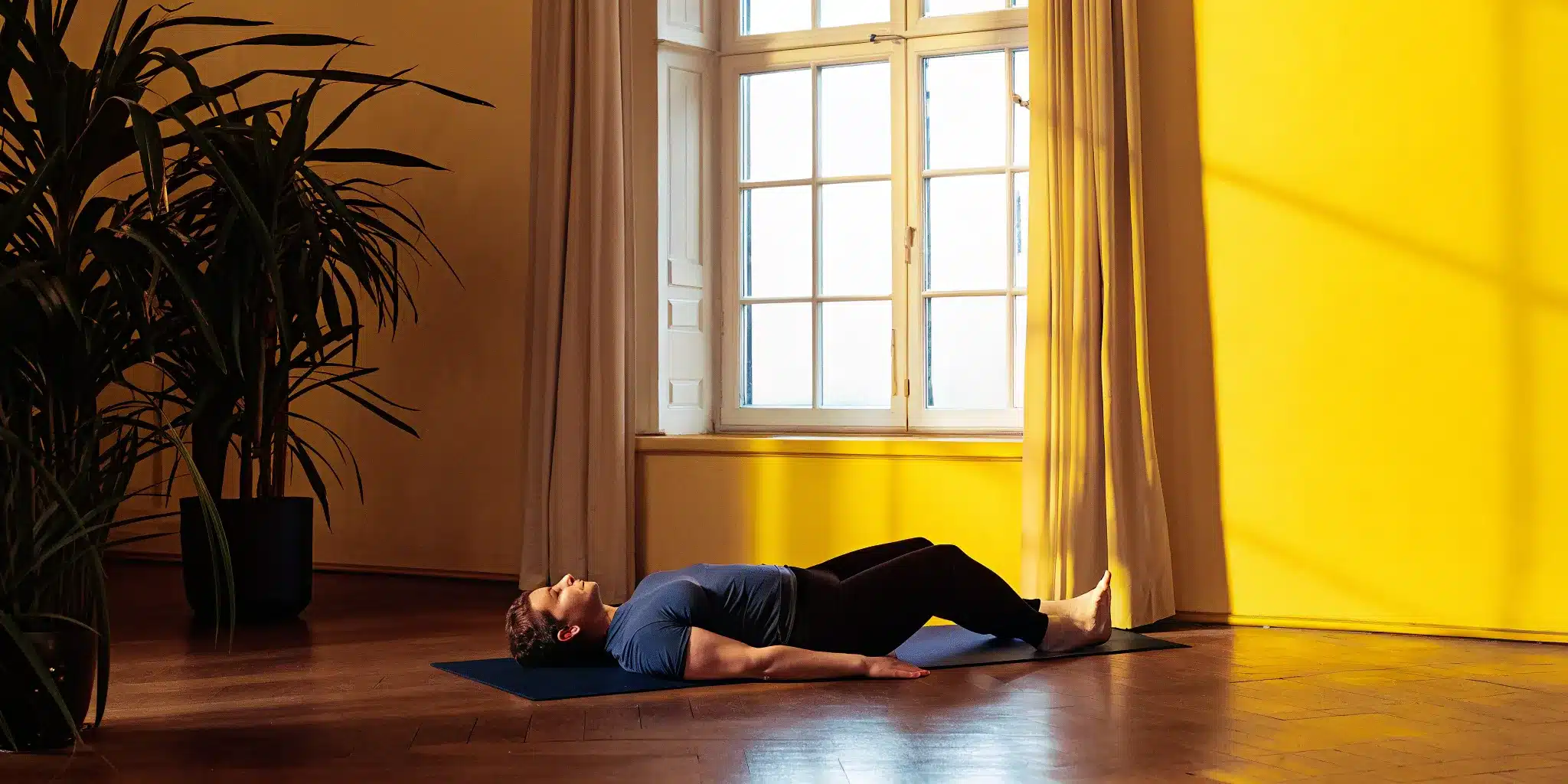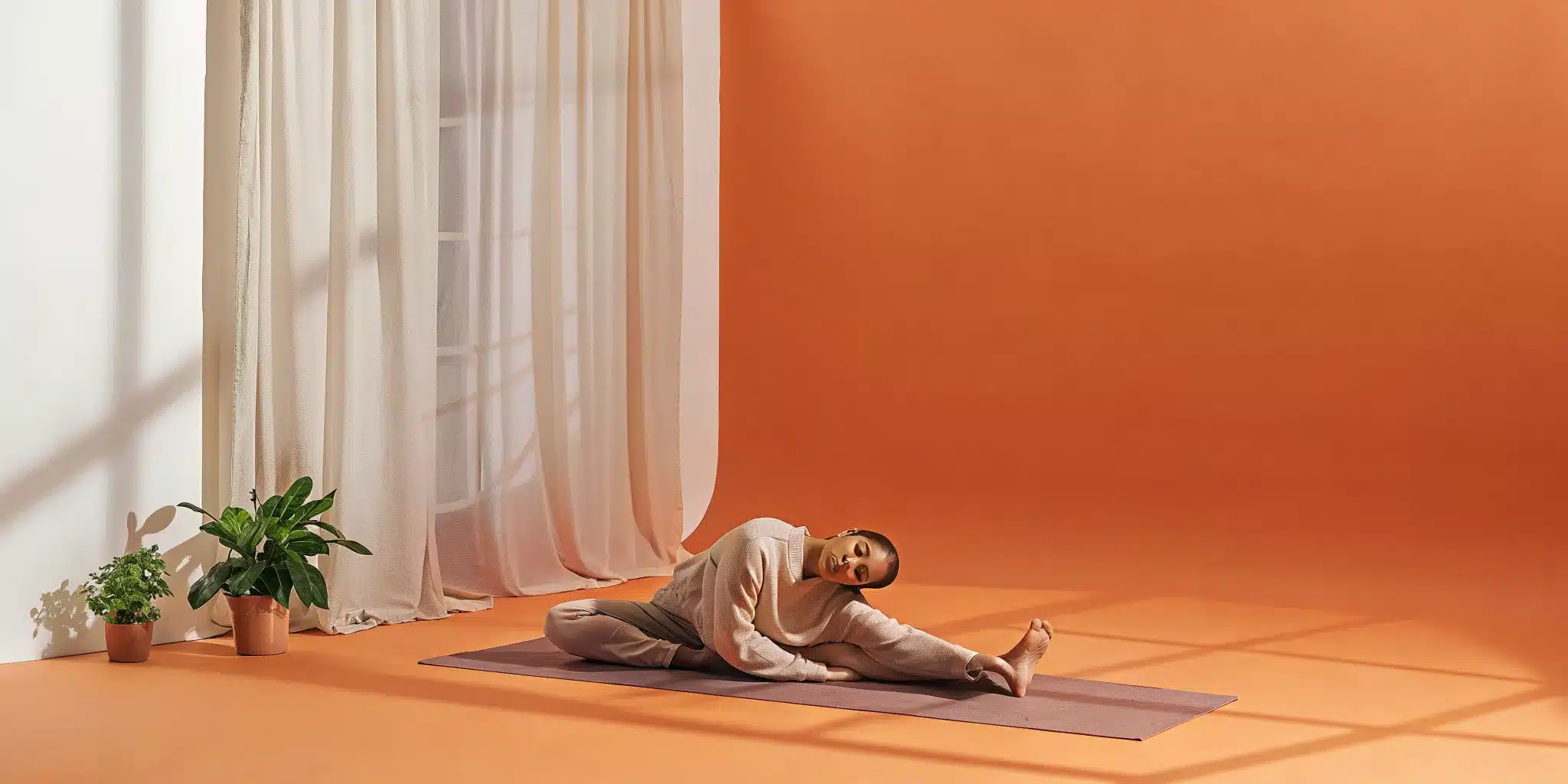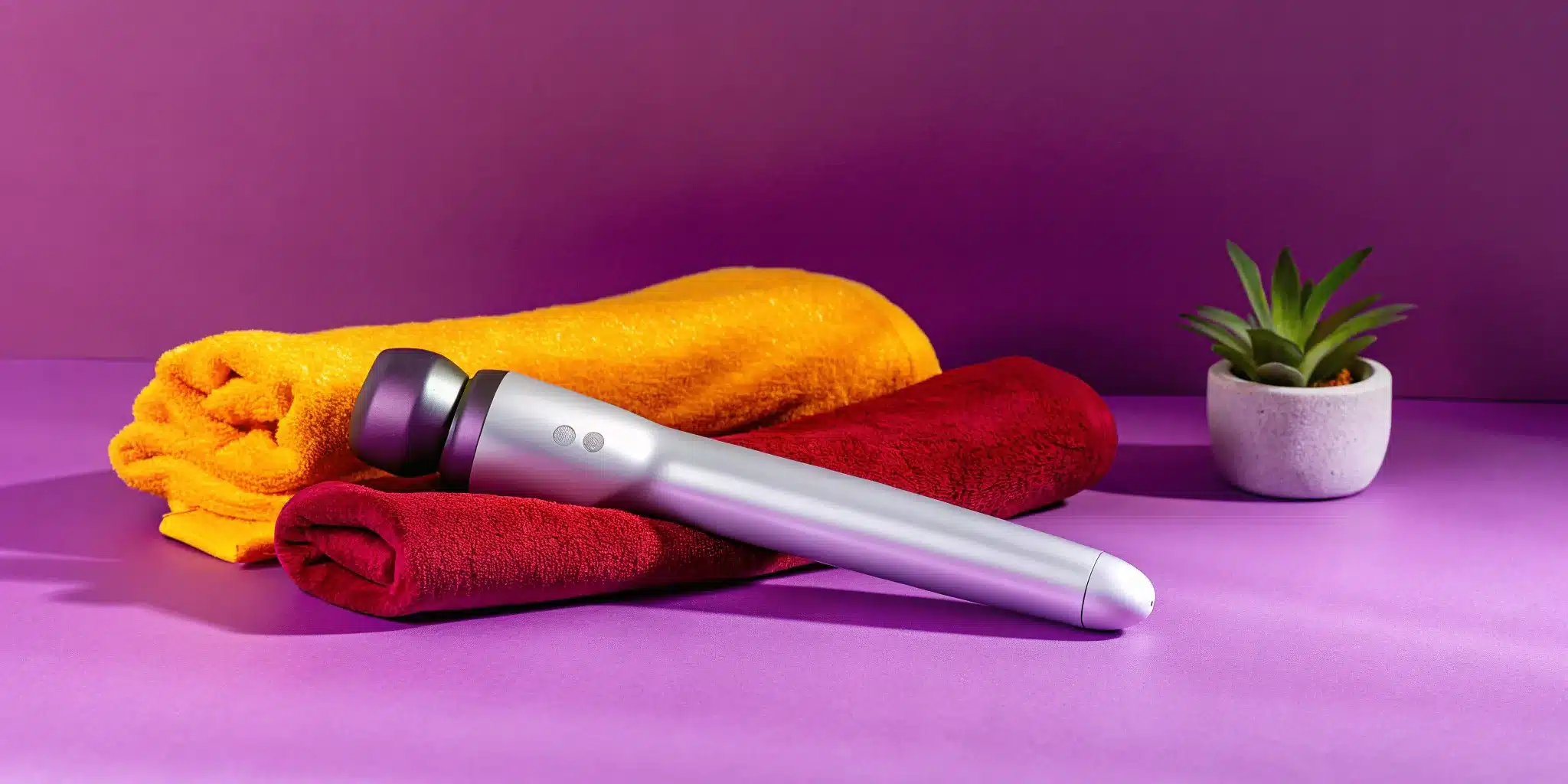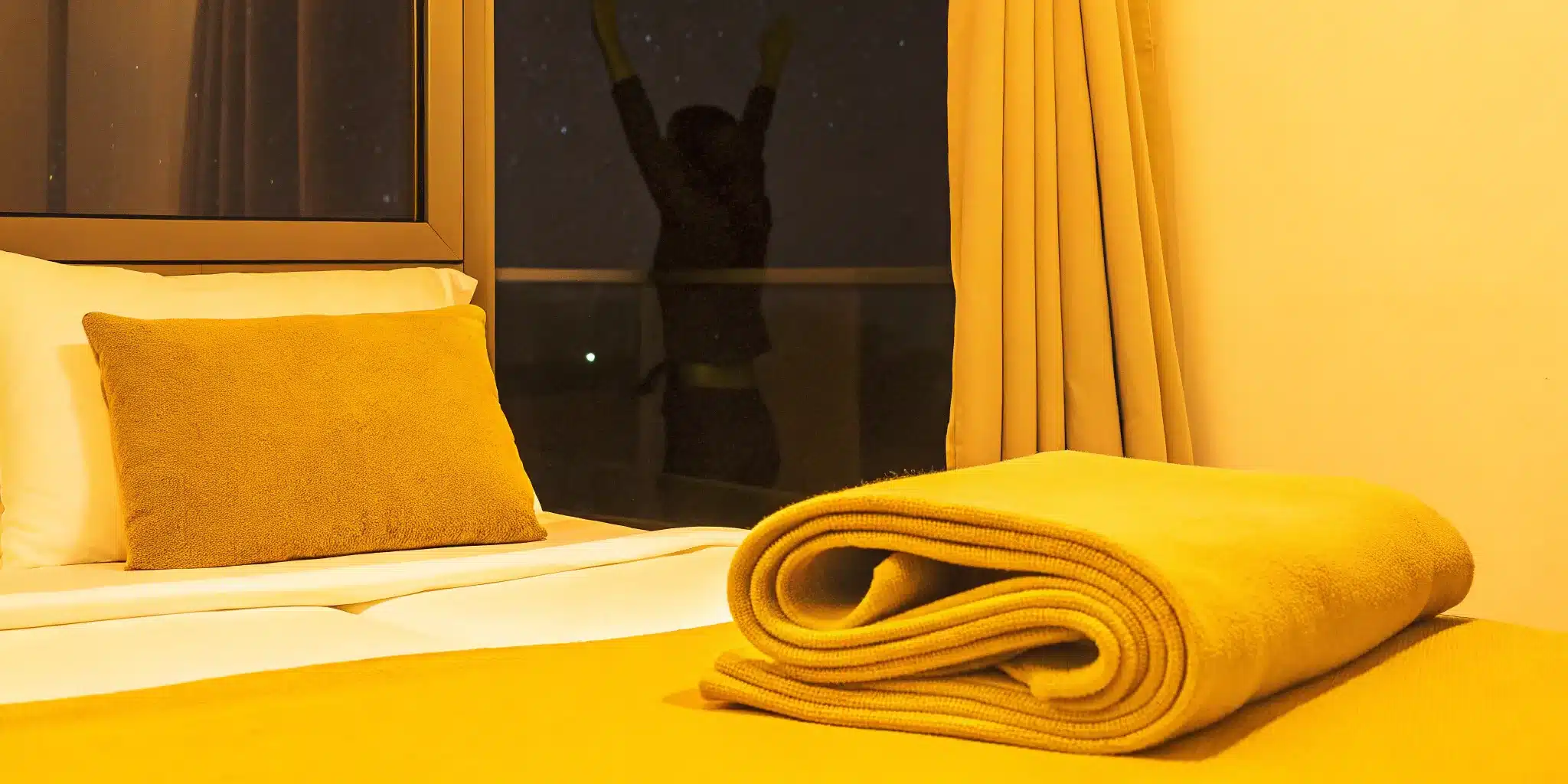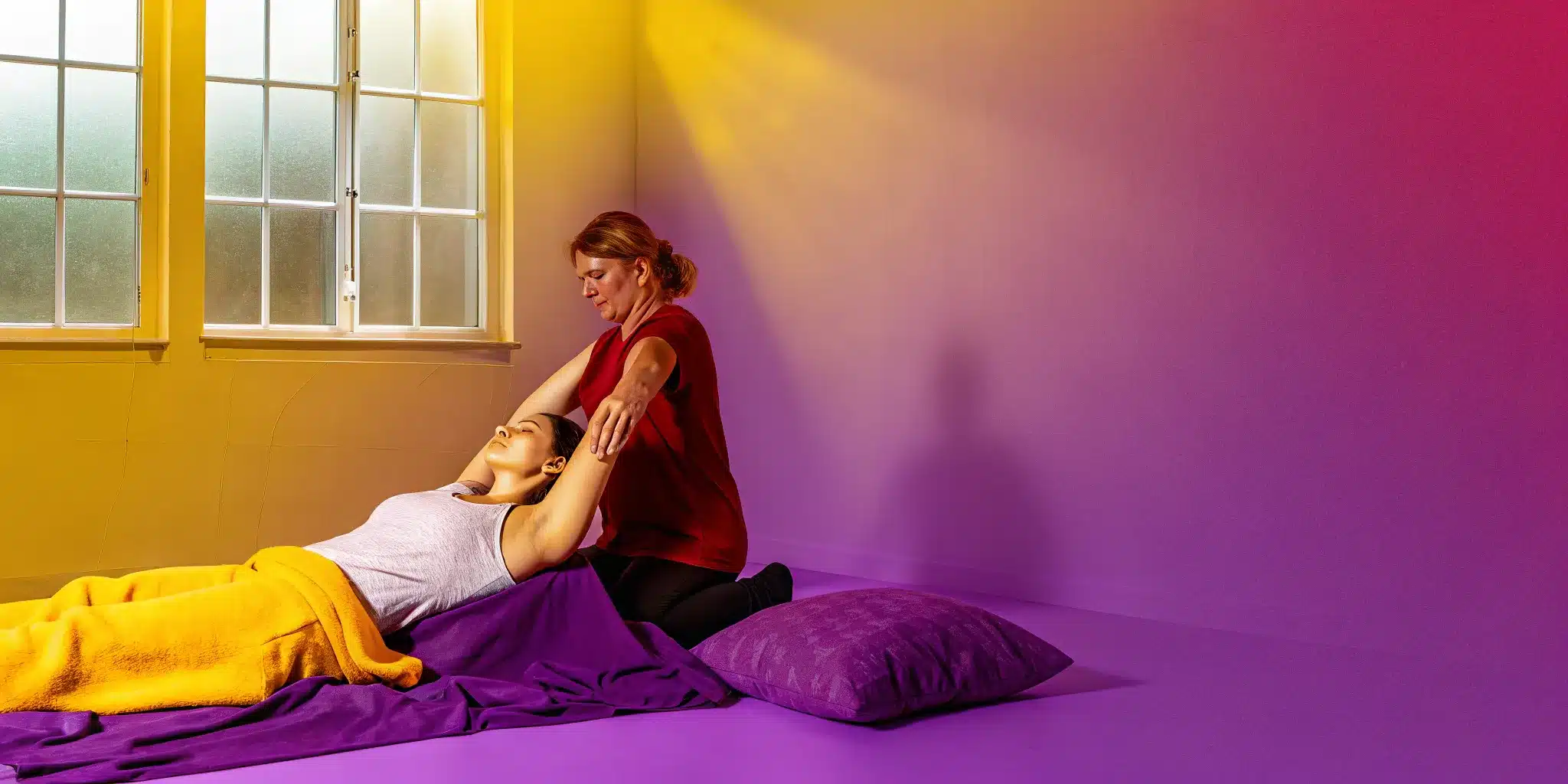Tight leg muscles often aren’t just the result of one tough workout; they’re a reflection of our daily lives. From hours spent sitting at a desk to the stress we carry in our bodies, many factors contribute to that persistent feeling of stiffness and discomfort. That’s why learning how to loosen tight muscles in legs requires a holistic approach that goes beyond just stretching. This guide looks at the bigger picture. We’ll explore targeted stretches and recovery methods, but we’ll also cover how hydration, posture, and even sleep play a crucial role in your muscle health. It’s about creating a supportive lifestyle that prevents tightness before it starts.
Key Takeaways
- Layer Your Tactics for Lasting Relief: Think of stretching, massage, and temperature therapy as a team. Stretching creates length, massage works out stubborn knots, and heat or cold therapy manages soreness. Using them together provides more complete relief than relying on just one method.
- Build a Foundation with Healthy Habits: The best way to fight muscle tightness is to prevent it. Simple daily actions like staying hydrated, getting enough sleep for muscle repair, managing stress, and maintaining good posture create a body that’s naturally more flexible and resilient.
- Prioritize Consistency and Know When to Ask for Help: A few minutes of stretching every day is more effective than one long session a week. If you’re still struggling with persistent tightness, it’s a sign to see a professional for targeted treatments like 1-on-1 assisted stretching to address the root cause.
Why Are My Leg Muscles So Tight?
If you feel like your legs are constantly wound up, you’re not alone. That persistent tightness can make everything from a morning walk to simply getting out of a chair feel like a chore. But what’s actually causing that stiff, achy feeling? Understanding the root of the problem is the first step toward finding lasting relief and moving freely again. Often, the cause is related to our daily habits, but sometimes it’s our body’s way of signaling that something else is going on.
Common Causes of Muscle Tension
Think of your muscles like rubber bands. They’re designed to stretch and contract, but certain things can make them lose their flexibility. Overuse from a tough workout or, conversely, underuse from sitting at a desk all day are two of the biggest culprits. Poor posture, dehydration, and even emotional stress can cause your muscles to clench up. Sometimes, that tightness is your body’s response to a minor injury. While less common, persistent muscle tension can also be linked to underlying health conditions, so it’s important to pay attention to what your body is telling you.
Signs Your Legs Are Too Tight
So, how do you know if your leg muscles have crossed the line from “a little sore” to “too tight”? The most obvious sign is a limited range of motion—maybe you can’t squat as deeply as you used to, or touching your toes feels impossible. You might also feel persistent aches, discomfort during simple movements, or a nagging pulling sensation. When one muscle group is too tight, others have to work overtime to pick up the slack. This can create muscle imbalances that throw your body out of alignment, increasing your risk of injury down the road.
When It’s Time to See a Professional
While some tightness can be managed at home, certain signs shouldn’t be ignored. It’s time to consult a professional if your muscle tightness doesn’t improve after a few weeks of self-care or if it’s accompanied by other symptoms. You should seek a professional opinion if you experience any of the following:
- Sudden, severe pain, especially with swelling, redness, or heat
- Numbness, weakness, or a tingling “pins-and-needles” sensation
- Pain that disrupts your sleep or daily activities
Listening to your body is key. If home remedies aren’t cutting it and the tightness persists, a specialist can help you identify the cause and create a plan to get you moving comfortably again.
The Best Stretches for Leg Relief
When your legs feel tight, knotted, and sore, stretching is one of the most effective ways to find relief. But not all stretches are created equal. The key is to use the right type of stretch at the right time to gently lengthen your muscles, ease tension, and improve your overall mobility. Think of it as a conversation with your body—you’re not forcing anything, just encouraging your muscles to relax and let go.
There are two main types of stretches we’ll focus on: dynamic and static. Dynamic stretches involve active movements that take your joints and muscles through their full range of motion. They’re fantastic for warming up before a walk, a run, or any physical activity. Static stretches are what most people picture when they think of stretching—you hold a position for a period to lengthen the muscle. These are best for cooling down or for dedicated flexibility work. By incorporating both into your routine, you can effectively target the major muscle groups in your legs—your hamstrings, quads, and calves—that are often the culprits behind that tight, achy feeling. A few minutes of focused stretching can make a world of difference.
Try These Dynamic Stretches
Before you ask your muscles to lengthen in a deep stretch, you need to warm them up. Jumping straight into static holds with cold muscles is a recipe for injury. Instead, start with dynamic stretches. These are active movements that prepare your body for what’s to come by increasing blood flow and raising your muscle temperature. A good warm-up only takes about three to five minutes of light movement, like marching in place or doing some gentle butt kicks.
Once you feel a little warmer, you can move into more specific dynamic leg stretches. Think leg swings (forward-and-back and side-to-side), walking lunges, or high knees. The goal is continuous movement, not holding any single position. This process tells your nervous system it’s time to get moving, making it easier to loosen tight muscles safely and effectively.
Hold These Static Stretches
After a workout or at the end of a long day, static stretching is your best friend. This is where you gently pull a muscle to its end range of motion and hold it. This type of stretching helps release built-up tension, improve flexibility, and calm your nervous system. The key is to be patient. Instead of bouncing or pushing into pain, find a point of mild tension and breathe into it.
For the best results, aim to hold each stretch for at least 30 seconds, and up to one minute if a muscle feels particularly tight. It might feel like a long time, but this duration gives your muscle fibers the time they need to relax and lengthen. Remember, consistency is what creates lasting change. Doing these stretches regularly over several weeks is how you can release chronically tight muscles for good.
Target Your Hamstrings, Quads, and Calves
To get the most out of your stretching routine, focus on the big three: hamstrings, quadriceps, and calves. For your hamstrings, try a simple standing hamstring stretch. Hinge at your hips with a flat back and straight legs until you feel a pull down the back of your thighs. For your quads, the classic standing quad stretch works wonders—just grab your ankle and gently pull your heel toward your glute.
And don’t forget your calves, which can get incredibly tight from walking and standing. A wall calf stretch is perfect for this. Stand facing a wall, place your hands on it for support, and step one foot back, keeping your leg straight and your heel on the floor. For all of these, hold for 30-60 seconds and repeat two to three times on each leg.
How to Stretch Correctly (and for How Long)
To truly benefit from stretching, it’s important to do it correctly. First and foremost, never stretch into sharp pain. You’re looking for a feeling of gentle tension, not a signal that something is wrong. Breathe deeply and evenly throughout each hold, which helps your muscles relax. Consistency is more important than intensity, so aim to stretch a little bit every day.
You can stretch throughout the day, but it’s especially beneficial before and after exercise to prevent muscle stiffness. A few minutes in the morning can wake your body up, and a session before bed can help you release the day’s tension. Listen to your body, be patient with your progress, and remember that every stretch is a step toward feeling more mobile and pain-free.
Soothe Sore Muscles with Massage
Stretching is fantastic for lengthening muscles, but sometimes you need a different approach to work out those stubborn knots. That’s where massage comes in. Think of it as the perfect partner to your stretching routine. Massage helps increase blood flow, reduce inflammation, and break up adhesions—those tight bands of tissue that can cause so much discomfort. It’s a hands-on way to tell your muscles it’s time to relax and let go of tension.
The great thing about massage is that it’s incredibly versatile. You can give yourself an effective massage at home using simple tools or just your hands. This allows you to address soreness right when it happens, whether it’s after a workout or a long day sitting at a desk. For deeper, more persistent tightness, seeing a professional massage therapist can be a game-changer. They have the expertise to pinpoint the source of your pain and use specific techniques to provide lasting relief. In this section, we’ll cover some simple ways you can use massage therapy to soothe your leg muscles, from using a foam roller to knowing when to call in a pro.
How to Use a Foam Roller
If you don’t have a foam roller yet, it’s one of the best recovery tools you can own. Using one is a form of self-myofascial release, which is a fancy way of saying self-massage to release muscle tightness. To start, place the foam roller on the floor and position it under the tight muscle in your leg. Use your arms to support your body and gently roll back and forth over the tender area for about 60 to 90 seconds. You control the pressure, so you can ease into it. Focus on your quads, hamstrings, and calves. If you find a particularly sore spot, pause there for a few seconds and breathe deeply to help the muscle release.
Simple Self-Massage Techniques
You don’t need any special equipment to give your legs some much-needed relief—your hands are powerful tools. Even a quick 20-minute massage can significantly reduce muscle tension. Find a comfortable place to sit and start by using long, gentle strokes on your calves and thighs, always moving toward your heart to encourage blood flow. You can then use your thumbs or knuckles to apply deeper pressure, kneading the muscle in a circular motion. This helps work out smaller knots. Don’t be afraid to experiment with different techniques, like gentle tapping or squeezing, to see what feels best for your muscles. The key is to listen to your body.
Get the Most from Your Recovery Tools
While a foam roller is great for large muscle groups, other tools can help you target specific spots with more precision. A lacrosse ball or a firm massage ball is perfect for getting into tight areas like your glutes and calves. Simply place the ball under the tight spot and use your body weight to apply pressure, holding it for 30-60 seconds until you feel a release. Massage sticks are another great option for your quads and shins, as they give you more control over the pressure. These tools allow you to dig a little deeper than you can with a foam roller, helping to break up stubborn knots and restore mobility.
Why a Professional Massage Can Help
Self-massage is an excellent daily practice, but sometimes you need an expert’s touch. A professional massage therapist has a deep understanding of anatomy and can identify and treat the root cause of your muscle tightness in ways you simply can’t on your own. They can use specialized techniques to release trigger points and address imbalances that contribute to chronic pain. If you have persistent tightness that doesn’t seem to improve with self-care, a licensed massage therapist can create a targeted treatment plan to help you find lasting relief. It’s a worthwhile investment in your long-term health and mobility.
Use Heat and Cold Therapy for Relief
When your legs are aching, reaching for a heating pad or an ice pack is a classic move for a reason. Temperature therapy is one of the simplest and most effective ways to manage muscle pain and stiffness at home. The science is straightforward: heat helps relax and loosen tight muscles by increasing blood flow, while cold helps reduce inflammation and numb sharp pain by constricting blood vessels.
Think of heat and cold therapy as your support system, working alongside stretching and professional care to help your legs feel their best. Knowing when to use each one—or even when to alternate between them—can make a huge difference in your recovery and daily comfort. It’s an accessible tool you can use to take control of your muscle health, providing immediate relief when you need it most. Understanding the right way to apply them ensures you get all the benefits without any risks, helping you manage muscle stiffness effectively.
When to Apply Heat
Think of heat as your go-to for chronic tightness, soreness, and that deep, achy feeling. Applying gentle warmth helps relax muscle fibers, making them more pliable and ready for gentle stretching. Heat is fantastic for warming up stiff muscles before activity or for soothing them at the end of a long day. According to experts, applying gentle heat can soothe tight, sore muscles and even reduce pain for short-term issues. Try using a heating pad, a warm towel, or soaking in a warm bath with Epsom salts for about 20 minutes to feel the tension melt away.
When to Use an Ice Pack
If you’re dealing with a new injury, swelling, or a sharp, acute pain, cold is your best friend. Ice helps numb the affected area and reduce inflammation, which is often the source of that immediate, intense pain. It’s the perfect response to a muscle strain or a flare-up that leaves your leg feeling tender and swollen. To do it safely, use an ice pack wrapped in a thin towel for about 10 to 15 minutes at a time. This prevents skin damage while allowing the cold to penetrate the muscle and do its job.
How to Alternate Hot and Cold Therapy
For those times when you have both stiffness and some inflammation, why not get the benefits of both? This method, often called contrast therapy, involves alternating between heat and cold to create a “pumping” action in your blood vessels. This helps flush out waste products and bring in fresh, nutrient-rich blood to accelerate healing. To try it, apply heat for about two to three minutes, then switch to cold for 30 to 60 seconds. Repeat this cycle three or four times to improve circulation and soothe your sore leg muscles.
Simple Rules for Application
Whether you choose heat, cold, or a combination, the key is to apply it safely and in cycles. A good rule of thumb is to use your chosen therapy for about 15 to 20 minutes at a time, then give your skin a break. You can repeat this several times throughout the day. Most importantly, always protect your skin. Place a towel or cloth between the heat or ice pack and your body to prevent burns or frostbite. Listen to your body—if something doesn’t feel right, stop.
Find the Right Professional Treatment
Sometimes, no matter how much you stretch or foam roll, that deep-seated tightness just won’t budge. When you’ve hit a wall with at-home remedies, it might be time to call in a professional. Getting an expert opinion can be a game-changer, helping you finally understand the root cause of your discomfort and get on a path to lasting relief. A trained specialist can see things you can’t, like subtle muscle imbalances or postural issues that contribute to your tight legs. They have the tools and techniques to release stubborn knots and guide you toward better movement patterns, so you can stop fighting the same old aches and pains.
The Power of 1-on-1 Assisted Stretching
If you feel like your solo stretching isn’t getting deep enough, 1-on-1 assisted stretching could be your answer. With this approach, a trained professional guides your body through a series of stretches. They can gently push you past your usual range of motion in a safe, controlled way that’s difficult to achieve on your own. This personalized attention helps release chronically tight muscles, correct underlying problems like muscle overuse, and improve your overall mobility. A practitioner can isolate specific muscles in your legs that you might not even realize are tight, giving you a more effective and targeted release.
Explore Different Therapeutic Methods
Assisted stretching is a fantastic option, but it’s not the only one. Depending on your specific needs, other therapies can also provide significant relief. A professional massage, for instance, is excellent for relaxing tense muscles and easing pain. Even a focused session can make a world of difference. For other types of chronic discomfort, you might consider treatments like acupuncture, which uses fine needles to target specific points on the body, or chiropractic care, which focuses on spinal alignment to improve overall function. Exploring these different methods can help you build a well-rounded approach to managing leg tightness.
How to Choose the Right Specialist
Finding the right person to help you is key. If you’re not sure what’s causing your tightness, a physical therapist or sports physio can be a great starting point. They are experts at diagnosing movement issues and can pinpoint which muscles are the source of the problem. When looking for any practitioner—whether it’s a stretch therapist, massage therapist, or chiropractor—do a little research. Check for certifications, read client reviews, and don’t be afraid to ask questions about their experience with issues similar to yours. The goal is to find someone you trust to help you move and feel better.
Move Better, Feel Better
Integrating more movement into your day is one of the most effective ways to combat and prevent tight leg muscles. It’s not about punishing workouts or complicated routines; it’s about creating sustainable habits that keep your body feeling good. From how you prepare for a walk to how you spend your workday, small adjustments can make a huge difference in your mobility and overall comfort. Let’s look at a few simple strategies to help you move better, so you can feel better every single day.
Prepare Your Body for Exercise
Jumping straight into a workout without a warm-up is a recipe for tight, sore muscles. Before any physical activity, even just a brisk walk, spend three to five minutes preparing your body. Start with some light movement like marching in place or arm circles to get your blood flowing and gently raise your heart rate. This signals to your muscles that it’s time to work. After your workout, a cool-down with static stretches is just as important. Focus on your hamstrings, quads, and calves, holding each stretch for 30-60 seconds to improve flexibility and release any tension you’ve built up.
Recover Smarter After Your Workout
What you do after exercise can be just as crucial as the workout itself. Smart recovery helps soothe soreness and prevent chronic tightness. Applying gentle heat with a heating pad can relax tense muscles and ease discomfort. Using a foam roller on your calves, quads, and hamstrings is another fantastic way to release knots and improve blood flow. Even a short, 20-minute massage can work wonders to reduce muscle tension. Taking the time to actively recover ensures your muscles heal properly, leaving you feeling refreshed and ready for your next activity instead of stiff and sore.
Simple Ways to Move More at Work
If you have a desk job, you know how easily stiffness can creep in. Sitting for long periods is a major contributor to tight leg muscles, especially in the hamstrings and hip flexors. The key is to break up your sitting time. Make it a point to stand up and move around every 30 to 60 minutes. You don’t need to do a full workout—a short walk to the kitchen, a few calf raises, or some gentle squats by your desk can make a world of difference. These small movement breaks prevent your muscles from locking up and keep your body feeling more open and flexible throughout the day.
Create a Daily Movement Habit
Consistency is everything when it comes to keeping your muscles loose and flexible. Instead of one long stretching session a week, aim for short, daily sessions. Just 5 to 15 minutes a day can have a much greater impact. You can incorporate a simple stretching routine into your morning or evening, focusing on the areas that feel tightest. Gentle yoga styles like Yin or restorative yoga are also excellent for releasing deep connective tissue. The goal is to make movement a non-negotiable part of your daily life, just like brushing your teeth. This consistent care will lead to lasting improvements in your mobility and help keep tightness at bay.
Prevent Tightness with Simple Lifestyle Changes
While stretching and massage are fantastic for immediate relief, building a lifestyle that prevents tightness in the first place is the key to long-term freedom from pain. Think of it as proactive care for your body. You don’t have to overhaul your entire life overnight. Instead, focusing on a few simple, consistent habits can make a world of difference in how your legs feel day-to-day. By paying attention to what you eat, how you sleep, the way you handle stress, and even how you sit, you can create an internal environment that encourages flexibility and keeps chronic tension from taking hold. These small adjustments work together to support your muscles, helping you stay mobile, active, and comfortable.
Fuel Your Body: Hydration and Nutrition Tips
What you put into your body directly impacts how your muscles function. Dehydration is a major cause of muscle cramps and stiffness, so start by making sure you’re drinking enough water throughout the day—aim for at least 64 ounces. Beyond water, certain nutrients are essential for muscle health. A healthy diet that includes enough calcium and magnesium can help prevent muscle stiffness and keep them contracting smoothly. You can find these vital minerals in foods like dairy products, dark leafy greens such as spinach and kale, nuts, and bananas. Think of your food and water intake as the foundation for flexible, happy muscles.
Prioritize Sleep for Better Recovery
Sleep is not a luxury; it’s a non-negotiable part of muscle recovery. While you rest, your body gets to work repairing the microscopic tears in your muscle fibers that occur from daily activity and exercise. This is when your body releases growth hormone, which is crucial for tissue repair and growth. Aiming for a solid seven to nine hours of quality sleep each night gives your leg muscles the time they need to fully recover and rebuild. If you consistently shortchange your sleep, you’re robbing your muscles of this critical repair window, which can lead to persistent tightness and soreness over time.
Manage Stress to Reduce Muscle Tension
Ever notice how your shoulders creep up toward your ears when you’re stressed? That same tension happens all over your body, including in your legs. Stress triggers a physical response, causing your muscles to contract and brace for a perceived threat. When you’re chronically stressed, your muscles can remain in a semi-contracted state, leading to stiffness and pain. Learning to manage your stress is a powerful tool for releasing this tension. Simple practices like deep breathing exercises, going for a short walk, or even just taking five minutes to listen to calming music can help signal to your body that it’s safe to relax.
Improve Your Posture
The way you hold your body throughout the day has a huge impact on your leg muscles, especially if you sit at a desk. Slouching or sitting in an awkward position can shorten your hip flexors and hamstrings, leading to tightness and lower back pain. Take a moment to check your workspace setup. Your chair should be adjusted so your hips are slightly above your knees, with your feet flat on the floor. This alignment helps maintain a neutral spine and reduces strain on your legs. Being mindful of your posture while standing and walking is just as important for keeping your body balanced and your muscles properly aligned.
Stay Flexible and Pain-Free for Good
Finding relief from tight leg muscles is a great first step, but the real goal is to keep that feeling of freedom and mobility for good. Lasting change comes from building a sustainable routine that supports your body day in and day out. It’s not about adding another hour-long commitment to your already busy schedule. Instead, it’s about weaving small, consistent actions into your life that prevent muscle tightness from creeping back in. Think of it as proactive care—a way to maintain your progress and keep your body feeling its best.
Build Habits That Actually Stick
Consistency is your best friend when it comes to flexibility. A few minutes of daily stretching will always be more effective than one intense session per week. Making movement a regular part of your routine helps your muscles stay pliable and resilient. Activities like yoga are fantastic for not only improving flexibility but also for reducing pain and stress. If you’re just starting, it’s a good idea to find a qualified teacher who can guide you through the poses safely to avoid injury. The key is to find a practice you genuinely enjoy, because that’s the habit you’re most likely to stick with long-term.
Check In with Your Body Regularly
Learning to listen to your body is a skill that can prevent minor stiffness from turning into chronic pain. Pay attention to the subtle signals your muscles send you throughout the day. Do you feel tension building in your calves after sitting for a while? That’s your cue to move. You can prevent a lot of muscle stiffness by simply avoiding sitting for long periods. Make it a point to get up, walk around, and stretch a few times a day. These small movement breaks interrupt the cycle of tension and keep your leg muscles from getting locked into a shortened, tight position.
Set Realistic Flexibility Goals
It’s easy to get discouraged if you expect to touch your toes overnight. True flexibility is built slowly and safely over time. When you stretch, aim to hold the position for up to one minute without bouncing. This gives your muscle fibers time to relax and lengthen. If you’re using a foam roller, gently work over a tight area for 60 to 90 seconds. Pushing yourself into pain is counterproductive and can lead to injury. Instead, focus on achieving a gentle, comfortable stretch. Celebrate small improvements in how you feel and move, and trust that your patience and consistent effort will pay off.
Key Strategies to Prevent Future Injury
A holistic approach is the best way to keep your muscles healthy and prevent future tightness. Simple lifestyle factors can make a huge difference. For example, maintaining a healthy weight reduces the daily stress placed on your muscles and joints. Another powerful strategy is to break up long periods of sitting. Try to stand up and move around for a few minutes every half-hour to an hour. These small habits contribute to a bigger picture of wellness and injury prevention, creating a resilient body that’s less prone to pain and better equipped to handle whatever your day throws at it.
Related Articles
- Muscle Strain Treatment: A Comprehensive Guide – STRETCHMED
- How to Do PNF Stretching Exercises for Hamstrings – STRETCHMED
- Stretch 3 Times a Day? Benefits & Safety Guide – STRETCHMED
- Benefits of a 1-on-1 Stretch Therapist: Improve Flexibility & Reduce Pain – STRETCHMED
Frequently Asked Questions
How long will it take to feel relief from stretching? There isn’t a magic timeline, as everyone’s body is different. You might feel some immediate, temporary relief after a good stretching session. However, creating lasting change in chronically tight muscles is a gradual process. With consistent daily effort, even just for 10-15 minutes, you’ll likely notice a significant improvement in your mobility and a decrease in general stiffness within a few weeks. The key is patience and consistency, not intensity.
Is it okay to stretch if my muscles are already sore? It depends on the type of soreness. If you’re feeling the general, dull ache of muscle soreness a day or two after a workout, gentle, dynamic stretching can actually help by increasing blood flow. However, if you feel any sharp, sudden, or radiating pain, it’s best to stop and rest. Pushing through that kind of pain can lead to injury. Always listen to your body and never stretch to the point of real discomfort.
I sit at a desk all day. What’s the most important habit to start with? If you can only focus on one thing, make it breaking up your sitting time. The most damaging part of a desk job is the prolonged, static position. Set a reminder to get up and move for just two to three minutes every hour. You don’t have to do a full routine—just walk around, do a few calf raises, or perform a simple standing quad stretch. This small habit prevents your muscles from locking up and makes a huge difference over time.
Heat or ice—which one is better for tight muscles? A simple way to remember is to use heat for muscles and ice for injuries. If your legs feel chronically stiff, tight, and achy, a heating pad or warm bath can help relax the muscle tissue and increase circulation. If you’re dealing with a new injury, swelling, or a sharp, acute pain, an ice pack is the better choice to help reduce inflammation and numb the area.
My stretching doesn’t seem to be working. What’s next? If you’ve been stretching consistently for several weeks and still feel stuck, it might be time for a new approach. Sometimes, self-stretching can only go so far, especially if there are deeper imbalances or knots you can’t quite reach. This is a perfect time to consider professional help, like 1-on-1 assisted stretching or a therapeutic massage. A trained specialist can identify the root cause of your tightness and use targeted techniques to help you finally get the relief you’re looking for.

